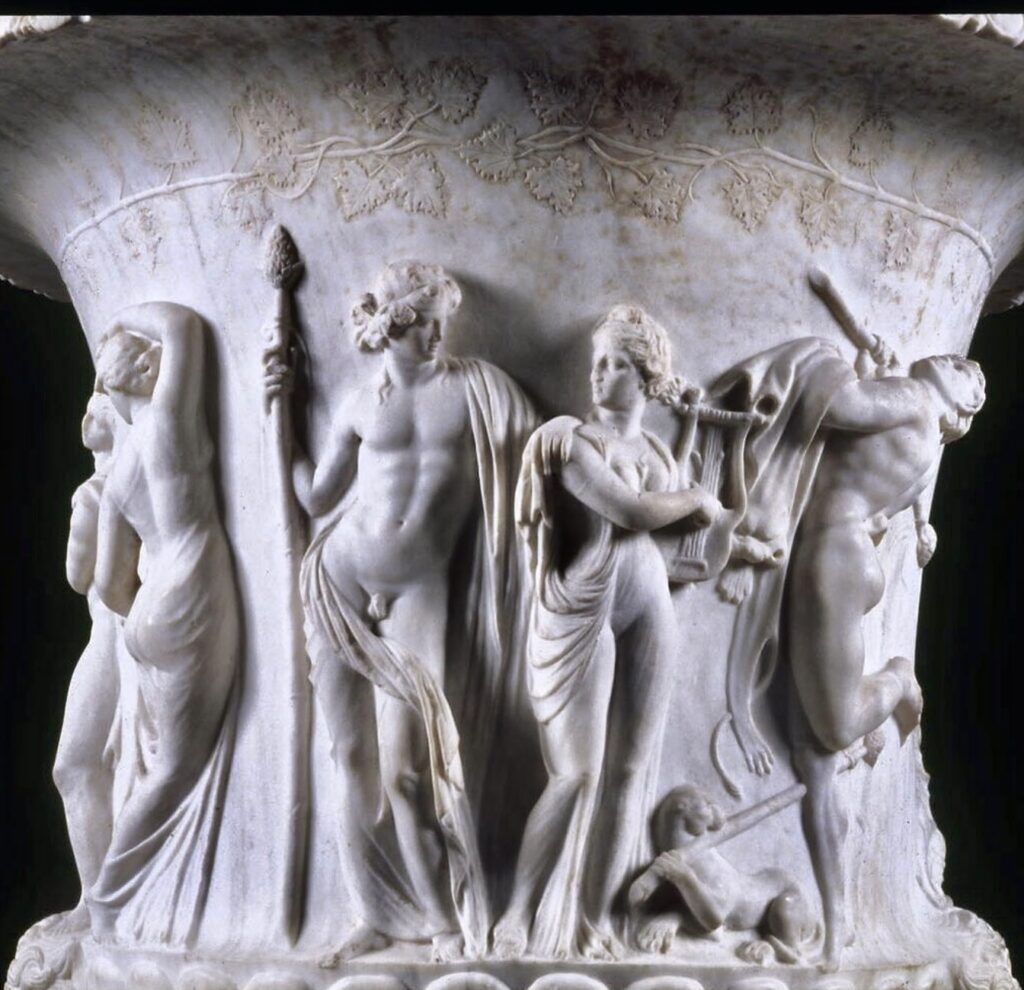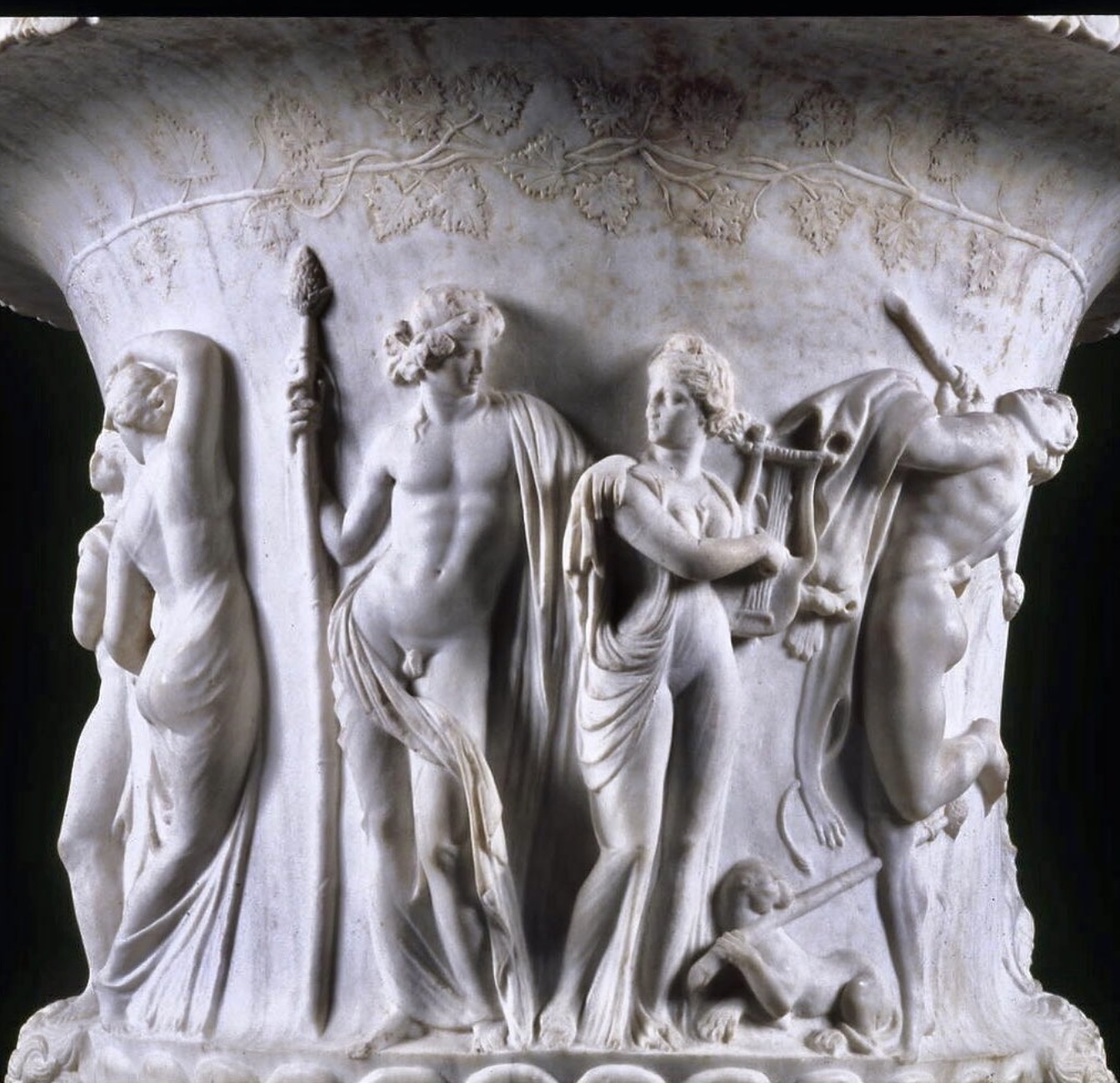Napoleon had a keen eye for beautiful pilfered things to bring back to his capital city, and (in my view) this is one of the best! Known as the “Borghese Krater”, it is a mammoth (nearly 2 meters tall!) vase sculpted out of Pentelic marble, and it is a marvel to behold.
Rollicking around the walls of the vase is a Dionysian scene, with the androgynous god and his companion Ariadne in the center, and a retinue of maenads and satyrs around them – dancing, playing musical instruments, and (in one case) falling down drunk. Above them, in lower relief, is a gilded grape vine.

The carving is likely the work of an Athenian workshop of the 1st century B.C. (perhaps one specialised in monumental marble kraters, which surged in popularity as a lavish decorative art during the Hellenistic period), and the quality is the highest level. This is especially evident in the filmy drapery clinging to the maenads’ voluptuous bodies (check out the tambourine player!)…quite a sculptural feat.
Two strikingly similar examples were found in the cargo of a ship (commonly referred to as the Mahdia shipwreck) that foundered off the coast of Tunisia around 80 B.C. during a voyage intended to bring a bevy of Greek sculpture to metropolitan Rome. Clearly there was a great demand for such works – the “Borghese Krater” was discovered in the Gardens of Sallust in Rome in 1569, likely transported from Greece in a more successful nautical adventure….
Napoleon bought it from his brother-in-law in Prince Borghese in 1807, and it has been in Paris ever since, now gracing the grand galleries of the Louvre.




